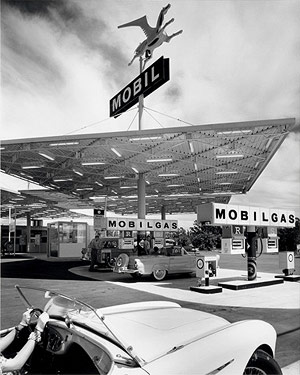|
Date: Wednesday, December 7, 2005
Time: 7:30 p.m.
Location: Getty Center, Harold M. Williams Auditorium
Admission: Free; reservations required.
This event, part of the Getty Research Institute's ongoing Modern Art in Los Angeles Project, presents a screening of Reyner Banham Loves Los Angeles (1972, 52 min.) followed by a discussion on representations of L.A. and its architecture in film, photography, and digital media.
Featured Speakers
Featured speakers will be Amy Murphy, assistant professor of architecture at the University of Southern California, and Edward Dimendberg, author of Film Noir and the Spaces of Modernity and associate professor of film and media studies and visual studies at the University of California at Irvine.
About Reyner Banham Loves Los Angeles
Long before Los Angeles's contribution to modern culture became widely recognized, British architectural historian Reyner Banham proclaimed it one of the world's great cities.
Banham's influential yet controversial book Los Angeles: The Architecture of Four Ecologies (1971) saw beauty in the city's sprawling layout and car-based urbanism.
Shortly after the book's publication, the BBC documented Banham's vision of Los Angeles for an episode of its series One Pair of Eyes.
The documentary, Reyner Banham Loves Los Angeles (1972, 52 min.), takes the viewer on a tongue-in-cheek tour of the city's cultural landscape.
The trip includes stops at iconic landmarks such as Simon Rodia's Watts Towers and the Lovell "Health" House designed by Richard Neutra (a photograph of the latter is on view in the Getty Research Institute's current exhibition Julius Shulman, Modernity and the Metropolis), as well as mini-malls, drive-thrus, and strip clubs.
An entertaining and thoughtful examination of a metropolis in motion, the film documents a city situated at the divide between the modern era's clean lines and faith in progress—as captured
in the work of architectural photographer Julius
Shulman—and what has been described as Banham's "Pop Art"
view, with its sparkle-front houses, Tiki huts, and jarring juxtapositions.
|
 |

|

